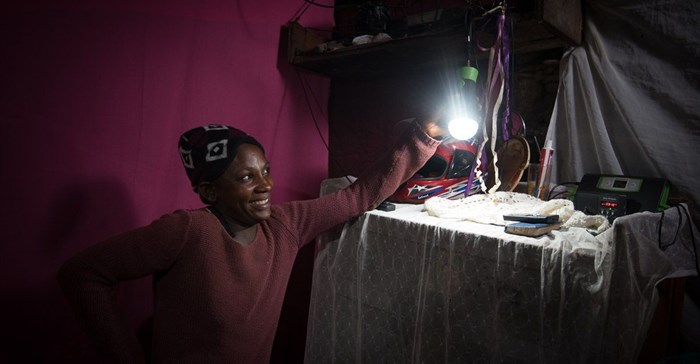
Related
Top stories

LegalKenyan court postpones case seeking to halt Diageo's $2.3bn sale of EABL
Duncan Miriri and Emma Rumney 1 day


LegalKenyan beer firm asks court to block Diageo's $2.3bn EABL sale to Asahi
Duncan Miriri and Emma Rumney 3 days



To date, however, funding off-grid solutions on a sufficiently large scale has inhibited the potential of these solutions to transform Africa’s rural economy.
In Kenya, approximately 50% of the population has access to electricity. In rural areas, it is as low as 5% - with fire wood accounting for 77% of the total energy consumed. In Uganda, approximately 14% of the population has access to electricity. This slips to 7% in rural areas where the bulk of electricity is supplied by generators, car batteries or solar photovoltaic units - not the national grid.
“Beyond electricity generation, building and maintaining extensive and expensive distribution networks in Africa’s often large and sparsely populated countries does not make practical or economic sense,” says Stephen Lovell, head, corporate financing solutions, East Africa for Stanbic Bank, a member of the Standard Bank Group.
Business models for at-home off-grid power supply have been in existence for some time, particularly in the United States. The ability to take from or supply power into the grid (and pay or get paid for the energy consumed or supplied), coupled with favourable tax treatment on the structure, has created a competitive market for off-grid power solutions.
Africa differs fundamentally from the United States in the sense that off-grid in its truest sense, needs to be just that, “and also affordable by households with very low disposable income,” says Lovell. As such, the cost of the basic technology (a few solar panels, light bulbs, a battery and phone charger) has to be reasonable, and be part of the overall budget a customer can afford. “This is critical if investment in this innovative technology is to be financed by commercial banks,” he adds.
In East Africa, the combination of innovative technology and finance have come together in a landmark off-grid solar transaction with the prospect to transform African growth.
Stanbic Bank’s arranging of $55m funding in Kenya and Uganda for M–Kopa, an off-grid pay-as-you-go energy company, shows “how rapidly and effectively new disruptive off-grid energy solutions can provide affordable energy when coupled with innovative financing solutions” says Lovell.
What’s exciting about the M-Kopa transaction, the largest off-grid debt funding arranged by a commercial bank in Africa, is that very soon payment records, and hence default rates, will become known to other funders who should be able to lend on a portfolio basis to more off-grid energy suppliers.
“This will rapidly increase the acquisition of this energy technology in Africa, placing affordable at-home off-grid power generating capacity in individual’s hands,” he says.
Since various sources of research confirm a positive correlation between energy use and economic growth, off-grid solutions are expected to have a measurable positive impact on the broader economy.
The improved affordability of the technology, with most solar units being the size of an A4 piece of paper, has resulted in businesses like M-Kopa no longer having to rely solely on equity funding like other start-ups. Instead, the affordability of the product, along with the scale of take up, means that M-Kopa has been able to expand its funding sources to include substantial commercial bank finance.